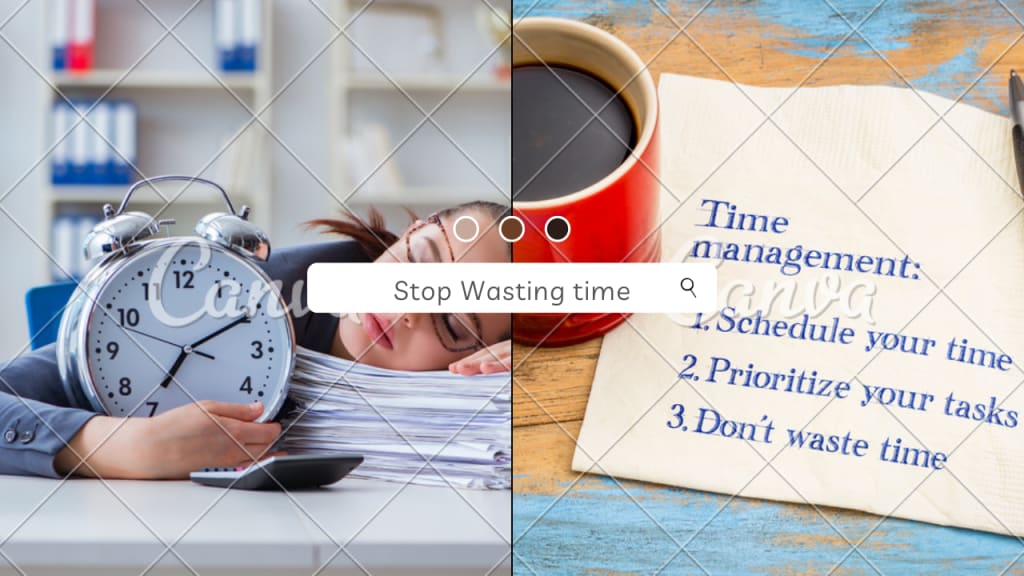How to Stop Wasting Time
4 Simple Steps to Increase Productivity

How to Stop Wasting Time: 4 Simple Steps to Increase Productivity
Do you ever feel like you're constantly running out of time? Like there's never enough time in the day to get everything done? If so, you're not alone. Many people struggle with managing their time and often find themselves feeling overwhelmed and stressed. But what if I told you that you could change that? What if I told you that you could stop wasting time and start maximizing your productivity? Well, you can, and in this post, I'll show you how.
Step 1: Identify Time-Wasters
The first step in stopping time-wasting is to identify what it is that's taking up all your time. This could be anything from scrolling through social media, checking emails too frequently, or spending too much time in meetings. Once you know what your time-wasters are, you can take action to eliminate or reduce them.
To get a better understanding of how you spend your time, try keeping a time log for a few days. Write down everything you do, how long you spend doing it, and what the outcome was. This will give you a clear picture of how you spend your time and where you can make changes.
Step 2: Prioritize Your Tasks
Once you've identified your time-wasters, it's time to prioritize your tasks. The key to being productive is to focus on the most important tasks and minimize the time spent on unimportant tasks. To prioritize your tasks, use the Eisenhower Matrix. This matrix is a simple tool that helps you categorize tasks based on their importance and urgency.
Tasks that are both important and urgent should be tackled first, followed by tasks that are important but not urgent. Tasks that are neither important nor urgent can be deferred or eliminated altogether. Tasks that are urgent but not important should be delegated if possible, or done as quickly as possible so that you can get back to the more important tasks.
Step 3: Create a Schedule
Creating a schedule is one of the best ways to stop wasting time and increase productivity. Having a schedule gives you a clear idea of what you need to do and when you need to do it, helping you to focus on the task at hand. When creating your schedule, make sure to allocate enough time for each task, and factor in time for breaks, exercise, and other activities that are important to you.
It's also important to stick to your schedule as much as possible. This may take some getting used to, but once you've developed the habit, you'll find that you're able to get more done in less time.
Step 4: Stay Focused
Staying focused can be a challenge, especially when there are so many distractions around us. But if you want to stop wasting time and increase your productivity, it's crucial that you stay focused on the task at hand. To help you stay focused, try the following:
Eliminate distractions. This could be anything from turning off notifications on your phone to closing your office door. Do whatever it takes to eliminate distractions and help you stay focused.
Use the Pomodoro technique. This technique involves working for 25 minutes and then taking a 5-minute break. Repeat this cycle for as many times as necessary. This technique helps you stay focused and avoid burnout.
Take breaks. Taking regular breaks helps to keep you fresh and focused. Whether it's a quick stretch, a cup of coffee, or a short walk, taking breaks will help you stay focused and avoid burnout.
Conclusion
Stopping time-wasting and increasing productivity can seem like a daunting task,
About the Creator
Enjoyed the story? Support the Creator.
Subscribe for free to receive all their stories in your feed. You could also pledge your support or give them a one-off tip, letting them know you appreciate their work.






Comments
There are no comments for this story
Be the first to respond and start the conversation.